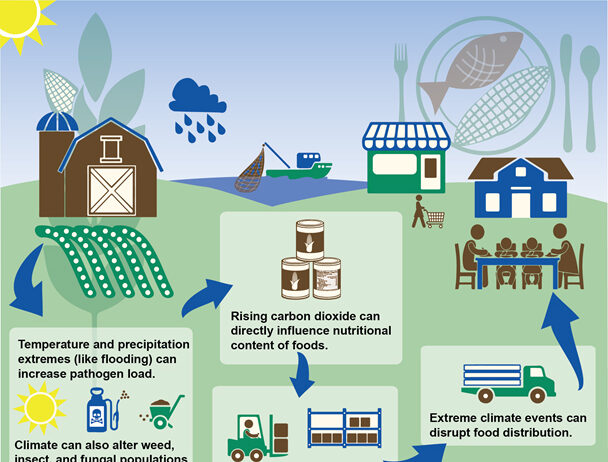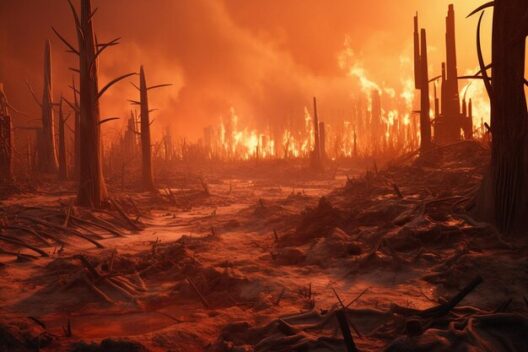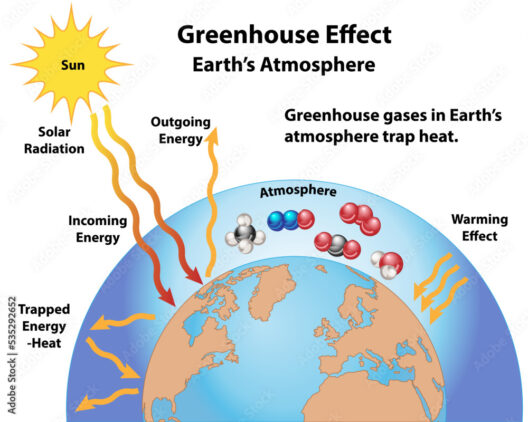The intricate relationship between human activity and climate change is a multifaceted issue that demands our attention. As inhabitants of this planet, we have a profound impact on its ecosystems, often with unintended consequences. Understanding how our actions contribute to climate change not only compels us to reflect on our choices, but also pushes us to advocate for a more sustainable future.
The rise in industrialization, urbanization, and changes in land use have irrevocably altered the natural balance of our environment. It’s crucial to delve into the various dimensions of human influence to grasp the urgency of addressing climate change.
Fossil Fuels: The Catalyst of Carbon Emissions
One of the most significant contributors to climate change is the combustion of fossil fuels. The burning of coal, oil, and natural gas for energy has resulted in a substantial increase in greenhouse gases (GHGs) like carbon dioxide (CO2) and methane (CH4) in the atmosphere. These gases trap heat, leading to a phenomenon known as the greenhouse effect.
From transportation—where cars, trucks, and airplanes release vast quantities of CO2 each day—to electricity generation—where coal-fired power plants dominate the landscape—the pervasive reliance on fossil fuels is unequivocally linked to climate change. As urban populations swell, the demand for energy continues to rise, further exacerbating emissions.
The aesthetic appeal of our sprawling cities often masks the critical environmental toll incurred by such energy consumption. Beautiful skylines are constructed on the backs of an unsustainable energy model, imparting urgency to the call for a transition to renewable energy sources, such as solar and wind, which promise a cleaner and sustainable future.
Deforestation: The Unseen Toll on Carbon Storage
Another detrimental human activity is deforestation, which diminishes the earth’s natural capacity to sequester carbon. Forests, often referred to as the lungs of the planet, play a pivotal role in absorbing CO2 from the atmosphere. However, the rampant clearing of forests for agriculture, logging, and urban development diminishes this critical service.
The allure of agricultural expansion promotes a ‘slash and burn’ mentality, where lush greenery is razed in favor of monoculture crops that are less bio-diverse and more susceptible to pests and diseases. The resulting landscape, devoid of its original flora and fauna, effects a double whammy—lost biodiversity coupled with increased atmospheric CO2 levels.
A visual manifestation of this destructive trend can often be seen in once-vibrant forests reduced to barren wastelands, showcasing a stark contrast to the rich ecosystems that existed before human intervention. It reemphasizes the need for sustainable agricultural practices and reforestation efforts to restore balance to our ecosystems.
Waste Production: The Overlooked Culprit
The production and improper management of waste contribute significantly to climate change, particularly through the release of methane. Landfills are a major source of methane emissions, as organic waste decomposes anaerobically. This potent greenhouse gas is much more effective at trapping heat in the atmosphere compared to CO2, amplifying the urgency for better waste management practices.
The contemporary convenience culture—characterized by single-use plastics and disposable products—exemplifies a throwaway mindset that is decidedly unsustainable. Urban environments often showcase the regrettable aesthetic of litter-laden landscapes, obscuring the beauty of nature with human-made artifacts that ultimately end up in local landfills, polluting our spaces and worsening our climate crisis.
Moreover, the act of consumerism fuels industries that contribute to pollution and climate change, creating a vicious cycle that requires urgent attention. Encouraging a shift towards circular economies—where products are recycled, reused, or composted—can mitigate these effects and provide a glimpse of hope in an otherwise bleak scenario.
The Role of Agriculture: Feeding People and Fuming the Planet
While agriculture is essential for sustaining a growing population, its practices also contribute significantly to climate change. Livestock production, particularly cattle, emits substantial quantities of methane— a powerful greenhouse gas. Additionally, the use of synthetic fertilizers and pesticides contributes further to environmental degradation, impacting soil health and water quality.
The idyllic imagery of pastoral farmland, often romanticized in popular culture, starkly contrasts with the reality of industrial farming practices that prioritize yield over sustainability. Transitioning towards regenerative agriculture, which promotes biodiversity and soil health, can restore ecosystems and reduce agricultural emissions.
Advocating for sustainable eating habits, including a reduction in meat consumption and an increase in plant-based diets, can significantly reduce our environmental footprint. Encouraging community-supported agriculture (CSA) initiatives can foster a connection between consumers and their food sources, creating a more sustainable and health-conscious society.
Catalysts for Change: The Path Forward
To combat climate change effectively, understanding how human activities contribute to environmental degradation is crucial. It is not merely about curtailing emissions or changing consumption habits; it is also about fostering a deep and abiding respect for our planet. Education and advocacy are pivotal in influencing policy changes and societal norms that prioritize sustainability.
Global collaborative efforts, underscored by local grassroots movements, have the potential to bring about transformative change. By embracing renewable energy, reforesting, managing waste responsibly, and practicing sustainable agriculture, humans can reverse some of the damaging effects we have inflicted upon our planet.
The overarching narrative reflects a call to action—an imperative to rethink our lifestyles and embrace a sustainable ethos that honors our environmental stewardship. Only through collective responsibility and concerted efforts can we hope to ensure a livable planet for future generations while maintaining the aesthetic beauty of nature that nurtures us all.







